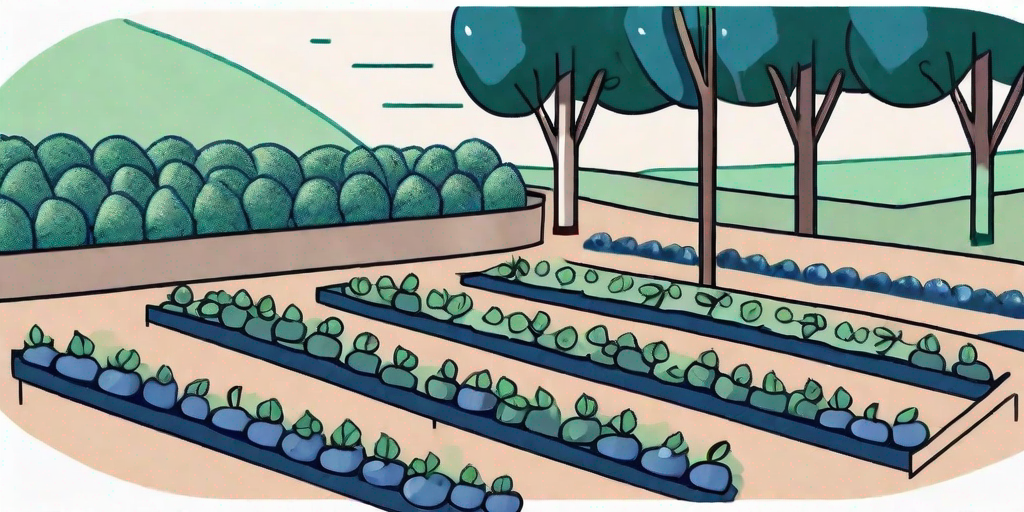
Blueberries, those little orbs of sweet-tart goodness, are not only a delight to the taste buds but also a powerhouse of nutrients. But have you ever considered growing them right in your backyard? Yes, you heard it right! With a bit of patience and care, you can grow and harvest your own blueberries from cuttings. Let's dive into this exciting journey from garden to plate, shall we?
Why Grow Blueberries?
Before we get our hands dirty, let's talk about why you should consider growing blueberries. First, they're delicious. Whether you're tossing them in your morning smoothie, baking them into muffins, or popping them straight into your mouth, blueberries are a versatile fruit that can add a burst of flavor to any dish.
Second, they're healthy. Blueberries are packed with antioxidants, fiber, and vitamin C, making them a great addition to your diet. Plus, there's something incredibly satisfying about eating food you've grown yourself. It's like a pat on the back from Mother Nature herself.
Lastly, growing blueberries is a fun and rewarding hobby. It's a great way to spend time outdoors, connect with nature, and reduce stress. Plus, you'll have the bragging rights of being a blueberry farmer. How cool is that?
Getting Started with Blueberry Cuttings
Now that we've established why you should grow blueberries, let's get down to the nitty-gritty of how to do it. The process begins with choosing the right blueberry cuttings.
Blueberry cuttings are simply pieces of blueberry plants that you can use to grow new plants. You can either buy them from a nursery or take them from an existing blueberry plant. When choosing cuttings, look for healthy, disease-free plants. The cuttings should be about 4-6 inches long and have at least two or three buds.
Once you have your cuttings, it's time to prepare them for planting. This involves removing the leaves from the bottom half of the cutting and dipping the cut end in a rooting hormone. This will help the cutting develop roots more quickly.
Planting Your Blueberry Cuttings
With your prepared cuttings in hand, it's time to get planting. But before you start digging, you need to prepare the soil. Blueberries prefer acidic soil with a pH between 4.5 and 5.5. You can adjust your soil's pH with sulfur or a soil acidifier if necessary.
When you're ready to plant, dig a hole deep enough to cover the bottom half of the cutting. Place the cutting in the hole, fill it with soil, and water it well. Then, wait for the magic to happen.
Over the next few weeks, your cutting will start to develop roots and new growth. It's important to keep the soil moist during this time, but be careful not to overwater. Too much water can cause the cutting to rot.
Caring for Your Blueberry Plants
Once your cuttings have taken root, it's time to start caring for your blueberry plants. This involves watering, fertilizing, pruning, and protecting your plants from pests and diseases.
Blueberries need regular watering, especially during dry periods. However, they don't like wet feet, so make sure your soil drains well. As for fertilizing, blueberries prefer a slow-release, acid-forming fertilizer. Apply it in early spring and again after harvest.
Pruning is also important for blueberry plants. It helps to maintain the plant's shape, encourages new growth, and increases fruit production. The best time to prune is in late winter or early spring when the plant is dormant.
Finally, keep an eye out for pests and diseases. Birds love blueberries as much as we do, so you might need to protect your plants with netting. Common diseases include powdery mildew and root rot, which can be prevented with proper care and attention.
Harvesting Your Blueberries
After all your hard work, it's finally time to reap the fruits of your labor. Literally. Blueberries are usually ready to harvest in mid to late summer. You'll know they're ready when they turn a deep blue color and easily come off the bush.
When harvesting, be gentle to avoid bruising the berries. It's also a good idea to harvest in the morning when the berries are cool. After harvesting, store your blueberries in the refrigerator to keep them fresh.
And there you have it! From garden to plate, you've grown and harvested your own blueberries. Now all that's left to do is enjoy them. Whether you eat them fresh, bake them into a pie, or freeze them for later, you're sure to enjoy the fruits of your labor.
Frequently Asked Questions
Can I grow blueberries in a pot?
Yes, you can! Blueberries are actually one of the best fruits to grow in pots. Just make sure to choose a pot with good drainage and use a potting mix designed for acid-loving plants.
How long does it take for a blueberry plant to bear fruit?
Blueberry plants usually start bearing fruit in their third year. However, it can take up to six years for a plant to reach full production.
Do I need more than one blueberry plant to get fruit?
While some varieties of blueberries are self-pollinating, having more than one plant can increase your yield. Plus, it's always fun to have more blueberries!
In Conclusion
Growing and harvesting your own blueberries from cuttings is a rewarding and delicious endeavor. With a bit of patience, care, and a dash of cheeky humor, you can enjoy the fruits of your labor in no time. So why not give it a try? Your taste buds (and your health) will thank you!











